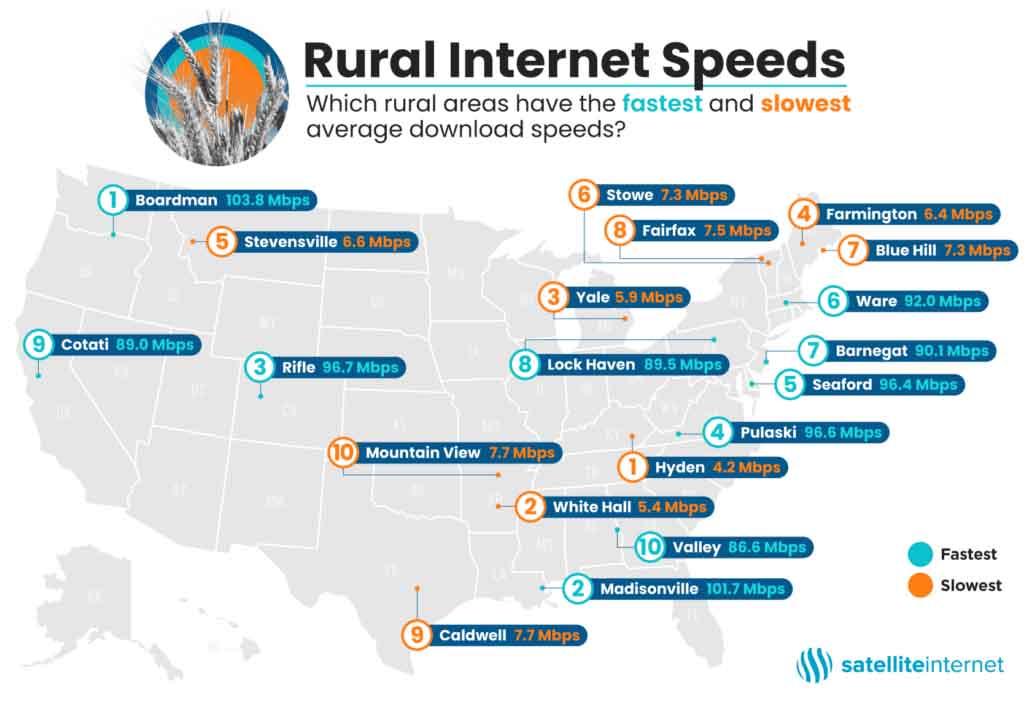We recommend Starlink as the best rural internet provider for several vital reasons. Starlink launched in 2020 and has rapidly grown and transformed the rural internet landscape. It has the best speeds and lowest latency of available satellite internet providers.
Starlink can deliver high-speed internet nearly anywhere in the world, making it the best option for those living in rural areas, no matter how remote. You can get speeds up to 220 Mbps to stream HD movies, have video calls, and play games online. Starlink’s low-earth orbit satellites give users low latency, which is just as important as download speeds. The other satellite providers suffer from high latency, which makes using the web sometimes laggy.
Starlink also has an unorthodox approach to installation and support. The equipment is entirely self-install, and Starlink doesn’t offer professional installation, so you’re on your own regarding setup. Thankfully, the Starlink kits are intuitive and easy to set up; you just need to be prepared for extra work if you plan to permanently mount them at home. Starlink’s customer support is sparse, offering only a support ticket system to resolve issues. There’s no email, live chat, or dedicated phone number for customer service.
The Starlink equipment has a pricy upfront cost, and the monthly subscription is more expensive than the average broadband price. However, you get to own the equipment, and Starlink offers unlimited data and doesn’t require contracts. The higher price tag is worth it for having such high-quality internet anywhere in the U.S.
Hughesnet is the provider with the lowest-priced packages. However, it requires a two-year commitment, locking you into the service unless you pay an early termination fee based on the remaining time on your contract. It has strict data caps of up to 200GB per month. When you run through the allotment, your speeds will fall to 1 to 3 Mbps. It is still usable for the most basic functions but needs to be more practical. You can purchase more data when you run out, but you will quickly inflate your initially cheap bill.
Viasat is a good, middle-of-the-road option for customers looking for reliable satellite internet, who don’t need blazing-fast speeds, and who don’t want to pay for costly plans and setups. It features unlimited data and no contract. Its monthly rate is comparable to Starlink’s, but it has no upfront cost and free installation in most locations.






